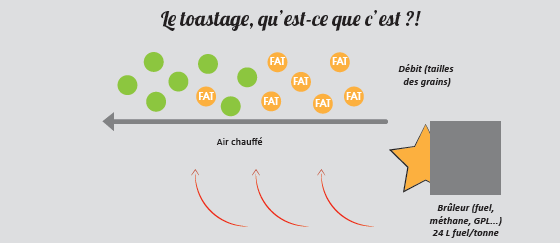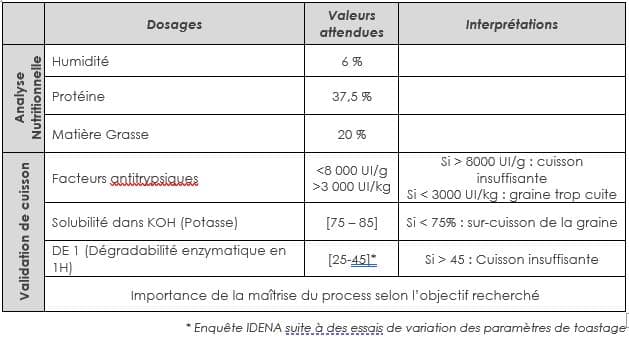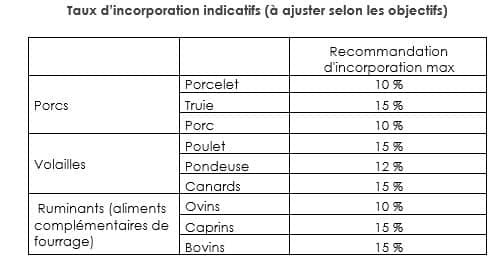Accueil › ID’info › Focus on raw materials: toasted soya beans
Reducing dependence on imported soya, saving on feed costs, diversifying crop rotation, excluding GM raw materials, defending 100% French and local feed… Whatever the objective, improving the protein self-sufficiency of French livestock farming has become an inescapable, if not essential, challenge for certain types of production (animals fed GM-free, organic farming). One response is of course to find alternatives to soya, despite the almost ideal amino acid profile of its meal, which is particularly dependent on the poultry industry because of its high protein requirements.
But before considering another oilseed and protein crop, this article looks at French soya beans, which, after toasting and combined with other protein raw materials, can limit the use of imported soya meal in certain formulas.
Toasting consists of heating the beans to reduce the content of anti-nutritional factors present in the raw soya bean and increase the level of assimilable protein. There are various toasters with specific time/temperature combinations depending on the heating power and length of the equipment.
During toasting, Maillard reactions take place between the proteins and the reducing sugars present in the seed. This is particularly useful for ruminants, as it ‘protects’ the proteins and reduces their degradation in the rumen. In monogastric animals, the main benefit of toasted soya bean lies in the reduction in anti-trypsin factor (ATF) content.
When the beans are ingested raw, trypsin inhibitors make it difficult to digest the proteins in the beans, which slows animal growth and increases feed conversion. By lowering FAT levels, protein digestibility is increased, making toasted soya bean more interesting in formulas. During toasting, it is important to control the time/temperature pairing used, as heating too much and/or for too long can have a negative effect on protein digestibility. What’s more, when the seeds leave the toaster, they need to be cooled before being used in the feed. This cooling stage must be properly understood, as the heat continues to act on the proteins as the temperature drops.


Seeds are a source of both protein and fat. It can therefore have an impact on the energy value of the feed. However, its incorporation rate needs to be adjusted to avoid excess linoleic acid (which has a negative impact on carcass quality). In addition, in the case of fat-limiting diets, the use of toasted soya beans can stimulate feed consumption.

Soya bean is therefore of definite interest in animal nutrition, subject to mastery of the toasting process and economic interest. Other uses for the beans exist, such as press cake, which we will be presenting shortly.
For more information, contact the Idena Formulation Department.